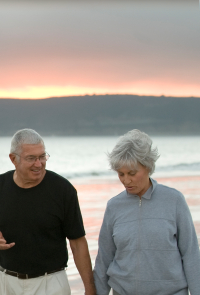
|
|
Related:
|
|
|
|
|
Imiquimod (Aldara) for Treament of sBCC
Imiquimod (Aldara) is a novel and very interesting medication. An immune-response modifier (IRM), it basically makes cells (i.e., monocytes, macrophages and dendritic cells that have special markers on them called toll-like receptor 7) produce a number of chemicals, which include interferon (IFN), tumour-necrosis factor and interleukins. In a sense, the immune system is turned on to attack unusual cells or ‘rogue’ cells. So these chemicals, such as interleukin-1, will induce T-helper lymphocytes to come in and kill the bad cells.
In July 2004, the U.S. FDA approved imiquimod for sBCCs on the body, excluding the face. (Most sBCCs are not found on the face.) Health Canada approved imiquimod for sBCCs in January 2005. Imiquimod has also been approved in Canada for AKs.
There have been a number of trials with imiquimod, both for sBCCs and nodular BCCs. In a 2002 study, patients showed a 100% cure using imiquimod twice a day (Geisse JK, et al. J Am Acad Dermatol 2002). However, that frequency would result in a very strong inflammatory reaction, so it is not acceptable to patients. The bottom line seems to be that, in the Phase III trials, using imiquimod five to seven times a week gave sBCC clearance of 75% and 73%, respectively. Other clinical trials show a cure rate of 82% for sBCC, confirmed by histology, compared with 3% in the placebo group (Geisse J, et al. J Am Acad Dermatol2004). The more often imiquimod is applied, the higher the numbers for sBCC clearance, because there is more reaction — redness, swelling and inflammation. The more inflammation there is, the better the results, because the inflammation is a reflection of turning on the lymphocytes that attack the cancer. Of course, there needs to be a balance for the patient. The studies were originally done over a 12-week period, but it has been shown that therapy over six weeks is equivalent to 12 weeks. Interestingly, occlusion does not have any effect on the efficacy of imiquimod.
Many doctors use imiquimod for sBCCs in situations when the patient —informed about the other options of C&E, surgical excision and cryotherapy— decides that he or she wants to try it, knowing that there is a chance that it will not work and surgery is always possible as the next step. Many patients appear to enjoy having this as an option for treating their photodamage and skincancers — an option that is safe, reasonably effective and self-administered. Many patients choose it because it is convenient, they are scared of or dislike surgery or they have had unacceptable scars from previous surgery. The clinical impression is that the cosmetic result from imiquimod is going to be superior to surgery. Imiquimod treatment for an sBCC costs about $400. It is difficult to compare the cost-effectiveness with C&E orsurgery.
For the first time, a topically applied, self-administered drug is having a very significant effect on sBCCs. Imiquimod treats problems across the board. It has also been reported that imiquimod has been very helpful in treating superficial lentigo maligna melanomas — lentigos that become melanomas, mostly on the face.
Back to Basal Cell Carcinoma - Treatment
|